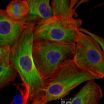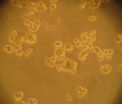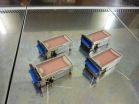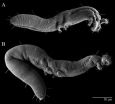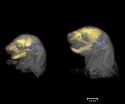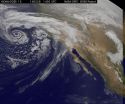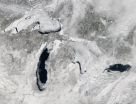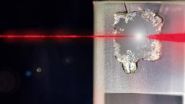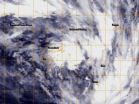(Press-News.org) In space, things don't always behave the way we expect them to. In the case of cancer, researchers have found that this is a good thing: some tumors seem to be much less aggressive in the microgravity environment of space compared to their behavior on Earth. This observation, reported in research published in February by the FASEB Journal, could help scientists understand the mechanism involved and develop drugs targeting tumors that don't respond to current treatments. This work is the latest in a large body of evidence on how space exploration benefits those of us on Earth.
Research in the weightlessness of space offers unique insight into genetic and cellular processes that simply can't be duplicated on Earth, even in simulated microgravity. "Microgravity can be approximated on Earth, but we know from the literature that simulated microgravity isn't the same as the real thing," says Daniela Gabriele Grimm, M.D., a researcher with the Department of Biomedicine, Pharmacology at Aarhus University in Aarhus, Denmark, and an author of the FASEB paper.
True weightlessness affects human cells in a number of ways. For one thing, cells grown in space arrange themselves into three-dimensional groupings, or aggregates, that more closely resemble what happens in the body. "Without gravitational pull, cells form three-dimensional aggregates, or spheroids," Grimm explains. "Spheroids from cancer cells share many similarities with metastases, the cancer cells which spread throughout the body." Determining the molecular mechanisms behind spheroid formation might therefore improve our understanding of how cancer spreads.
The FASEB paper resulted from an investigation in the Science in Microgravity Box (SIMBOX) facility aboard Shenzhou-8, launched in 2011. Cells grown in space and in simulated microgravity on the ground were analyzed for changes in gene expression and secretion profiles, with the results suggesting decreased expression of genes that indicate high malignancy in cancer cells.
The work was funded by a grant from the German Space Life Sciences program, managed by the German space agency, DLR, in collaboration with Chinese partners.
Grimm and her colleagues are following up with additional research, a Nanoracks Cellbox investigation called "Effect of microgravity on human thyroid carcinoma cells," scheduled to launch in March on SpaceX's third commercial resupply mission to the International Space Station. Another follow-up investigation, "Spheroids," is planned in 2015. The overall goal is to find as many genes and proteins as possible that are affected by microgravity and to identify the cellular activities they influence. Researchers can then use this information to develop new strategies for cancer research.
In a recent paper published in Nature Reviews Cancer, Jeanne Becker, Ph.D., a cell biologist at Nano3D Biosciences in Houston and principal investigator for the Cellular Biotechnology Operations Support System (CBOSS) 1-Ovarian study, examined nearly 200 papers on cell biology research in microgravity during four decades. This body of work shows that not only does the architecture of cells change in microgravity, but the immune system also is suppressed. Other studies in addition to Grimm's have shown microgravity-induced changes in gene expression. The key variable, Becker concluded, is gravity. And the only way to really mitigate gravity is to go into space.
To maximize use of the space station's unique microgravity platform, in 2011 NASA named the Center for the Advancement of Science in Space (CASIS) as manager of the station's U.S. National Laboratory. By selecting research and funding projects, connecting investors and scientists and improving access to the station, CASIS accelerates new technologies and products with the potential to benefit all humanity.
CASIS recently requested proposals for research on the effects of microgravity on fundamental stem cell properties. That request, says Patrick O'Neill, communications manager, generated a terrific response from the research community - larger than any other CASIS proposal to date. That, he says, is because CASIS has become more known within the scientific and research community as a viable option for sending research to the space station. It is also because, now that the station is complete, crew members can increase their focus on research. All in all, this is an ideal time to send research to the station.
Grimm agrees. "The station is an invaluable tool for long-term studies of cells in microgravity. Exposure to real microgravity in space will always be the gold standard for all microgravity research and will therefore always be an important cornerstone of our work."
Thanks to that research in space, scientists continue to learn more about diseases and their possible treatment here on Earth. With this new knowledge, we can turn that unexpected behavior in microgravity to our own advantage.
INFORMATION:
Tackling tumors with space station research
2014-02-28
ELSE PRESS RELEASES FROM THIS DATE:
Worm-like mite species discovered on Ohio State's campus
2014-02-28
COLUMBUS, Ohio – It looks like a worm and moves like a worm – sort of. But it is a previously unidentified microscopic species of mite that was discovered by a graduate student on The Ohio State University campus.
Affectionately dubbed the "Buckeye Dragon Mite" by Ohio State's Acarology Laboratory, the mite is officially named Osperalycus tenerphagus, Latin for "mouth purse" and "tender feeding," in a nod to its complex and highly unusual oral structure.
This mite doesn't resemble a mythological winged dragon, but the snake-like Chinese dancing dragons that appear in ...
3-D imaging sheds light on Apert syndrome development
2014-02-28
Three dimensional imaging of two different mouse models of Apert Syndrome shows that cranial deformation begins before birth and continues, worsening with time, according to a team of researchers who studied mice to better understand and treat the disorder in humans.
Apert Syndrome is caused by mutations in FGFR2 -- fibroblast growth factor receptor 2 -- a gene, which usually produces a protein that functions in cell division, regulation of cell growth and maturation, formation of blood vessels, wound healing, and embryonic development. With certain mutations, this gene ...
GOES-West satellite eyes soggy storm approaching California
2014-02-28
A swirling Eastern Pacific Ocean storm system headed for California was spotted by NOAA's GOES-West satellite on February 28. According to the National Weather Service, this storm system has the potential to bring heavy rainfall to the drought-stricken state.
The storm was captured using visible data from NOAA's GOES-West or GOES-15 satellite on Feb. 28 at 1430 UTC/6:30 a.m. PST was made into an image by NASA/NOAA's GOES Project at NASA's Goddard Space Flight Center in Greenbelt, Md. The storm's center appeared as a tight swirl, with bands of clouds and showers already ...
NASA satellite sees great freeze over Great Lakes
2014-02-28
At night, as cold settles in, lake ice creaks and groans. It's been excessively cold, and I camped exposed on the snow-swept surface. Other than the lack of vegetation and the sounds at night, you'd never know you were on a lake. It feels like an empty plain. In some places, you see pressure ridges where ice has pushed into itself, sticking up like clear blue stegosaurus plates. -- Craig Childs
Author Craig Childs is not describing an Arctic lake. He's describing the bitterly cold and frozen scene on Lake Superior, during his February 2014 trek on the ice near the coast ...
Ultra-fast laser spectroscopy lights way to understanding new materials
2014-02-28
Scientists at the U.S. Department of Energy's Ames Laboratory are revealing the mysteries of new materials using ultra-fast laser spectroscopy, similar to high-speed photography where many quick images reveal subtle movements and changes inside the materials. Seeing these dynamics is one emerging strategy to better understanding how new materials work, so that we can use them to enable new energy technologies.
Physicist Jigang Wang and his colleagues recently used ultra-fast laser spectroscopy to examine and explain the mysterious electronic properties of iron-based superconductors. ...
Detection of water vapor in the atmosphere of a hot jupiter
2014-02-28
Although liquid water covers a majority of Earth's surface, scientists are still searching for planets outside of our solar system that contain water. Researchers at Caltech and several other institutions have used a new technique to analyze the gaseous atmospheres of such extrasolar planets and have made the first detection of water in the atmosphere of the Jupiter-mass planet orbiting the nearby star tau Boötis. With further development and more sensitive instruments, this technique could help researchers learn about how many planets with water—like Earth—exist within ...
Smoke in the water: Understanding the effects of smoke compounds on seed germination
2014-02-28
Although seemingly destructive, wildfires help to maintain biodiversity and are an important element of many ecosystems throughout the world. Not only do fires discourage non-native and invasive species from becoming established, but the quick release of nutrients, heat, and compounds found in ash and smoke play an important role in the life cycle of the native flora. For plants that are adapted to ecosystems where fire is a regular occurrence—such as savannas, grasslands, and coniferous forests—exposure to fire may initiate seed germination or enhance plant growth.
Recent ...
The nature of color: New formula to calculate hue improves accuracy of color analysis
2014-02-28
A stroll through the produce aisle in your local grocery store exhibits a plethora of vivid colors. From opposing hues, like red apples next to green celery, to subtler variations, such as light to dark purple grapes, every color seems to hold its own unique attraction. Is there a way to precisely measure these hundreds of colors? This is a crucial question for scientists studying the biological importance of color in nature, but measuring color is much more challenging than measuring other characteristics, like size or weight. In recent work, University of Colorado researcher ...
Tropical Cyclone 16P forms near Fiji
2014-02-28
Tropical Cyclone 16P formed near Fiji after lingering in the region for several days as a tropical low pressure area. NOAA's GOES-West satellite captured an infrared image of the storm on February 28.
NOAA's GOES-West satellite image showed the center of Tropical Cyclone 16P to the northeast of Fiji and over Vanua Levu. Broken bands of thunderstorms wrapping from the north to the east and southeast reached Wallis and Fortuna, Samoa, Niue and Tonga.
At 0900 UTC/4 a.m. EST, Tropical Cyclone 16P was centered about 170 nautical miles/`95.6 miles/314.8 km northeast of Suva, ...
To teach scientific reproducibility, start young
2014-02-28
DURHAM, N.C. -- The ability to duplicate an experiment and its results is a central tenet of the scientific method, but recent research has shown an alarming number of peer-reviewed papers are irreproducible.
A team of math and statistics professors has proposed a way to address one root of that problem by teaching reproducibility to aspiring scientists, using software that makes the concept feel logical rather than cumbersome.
Researchers from Smith College, Duke University and Amherst College looked at how introductory statistics students responded to a curriculum ...
